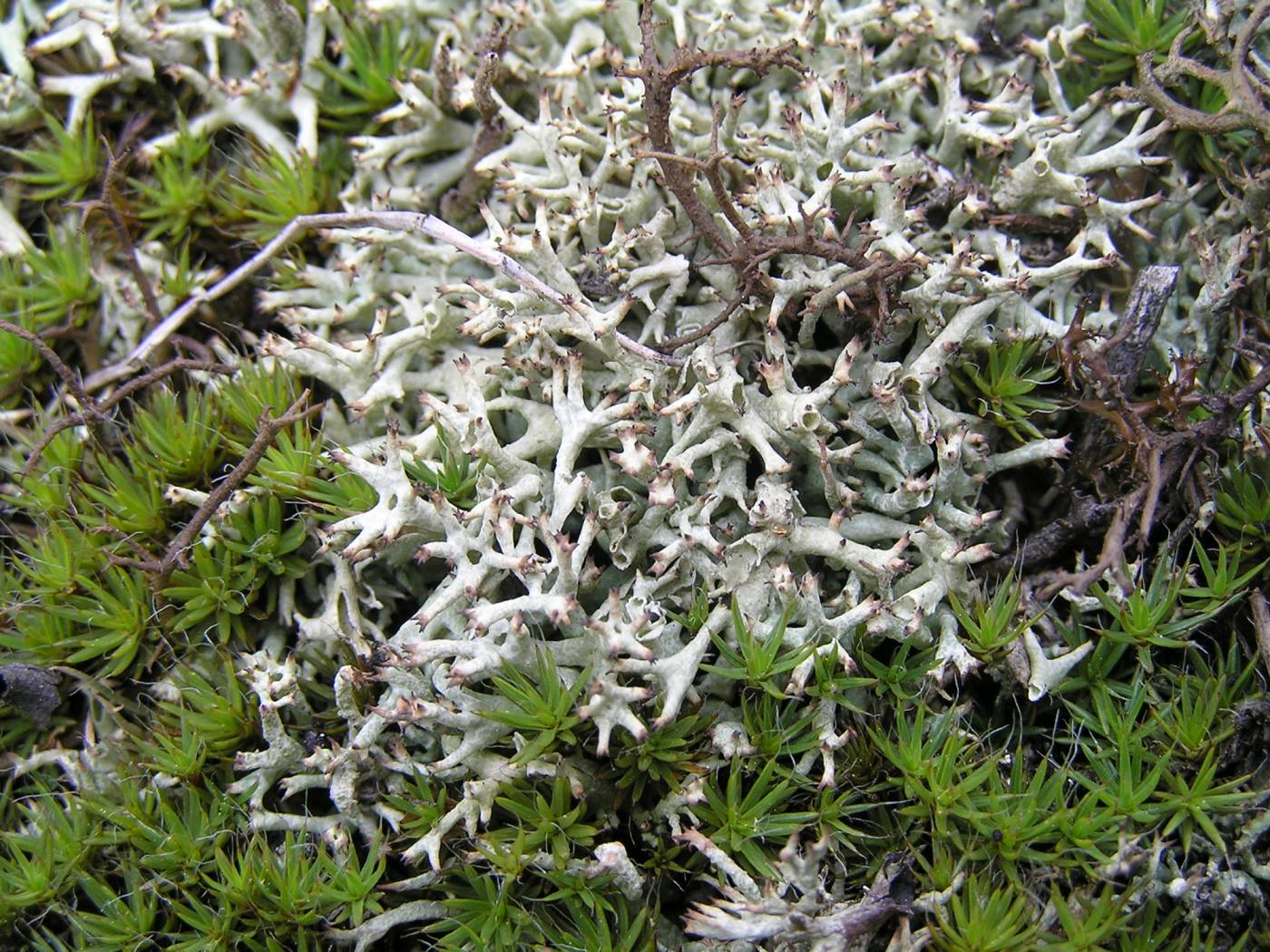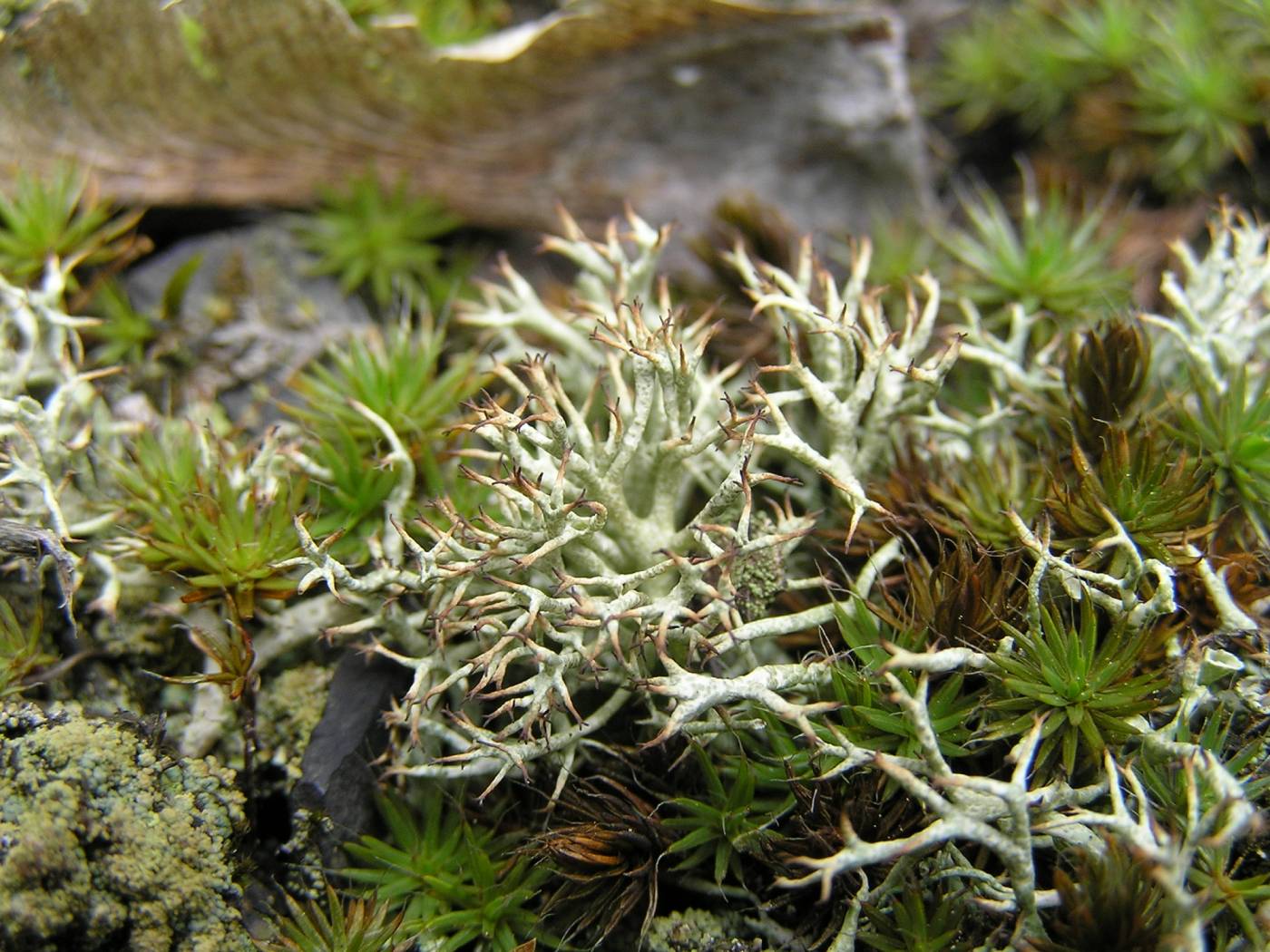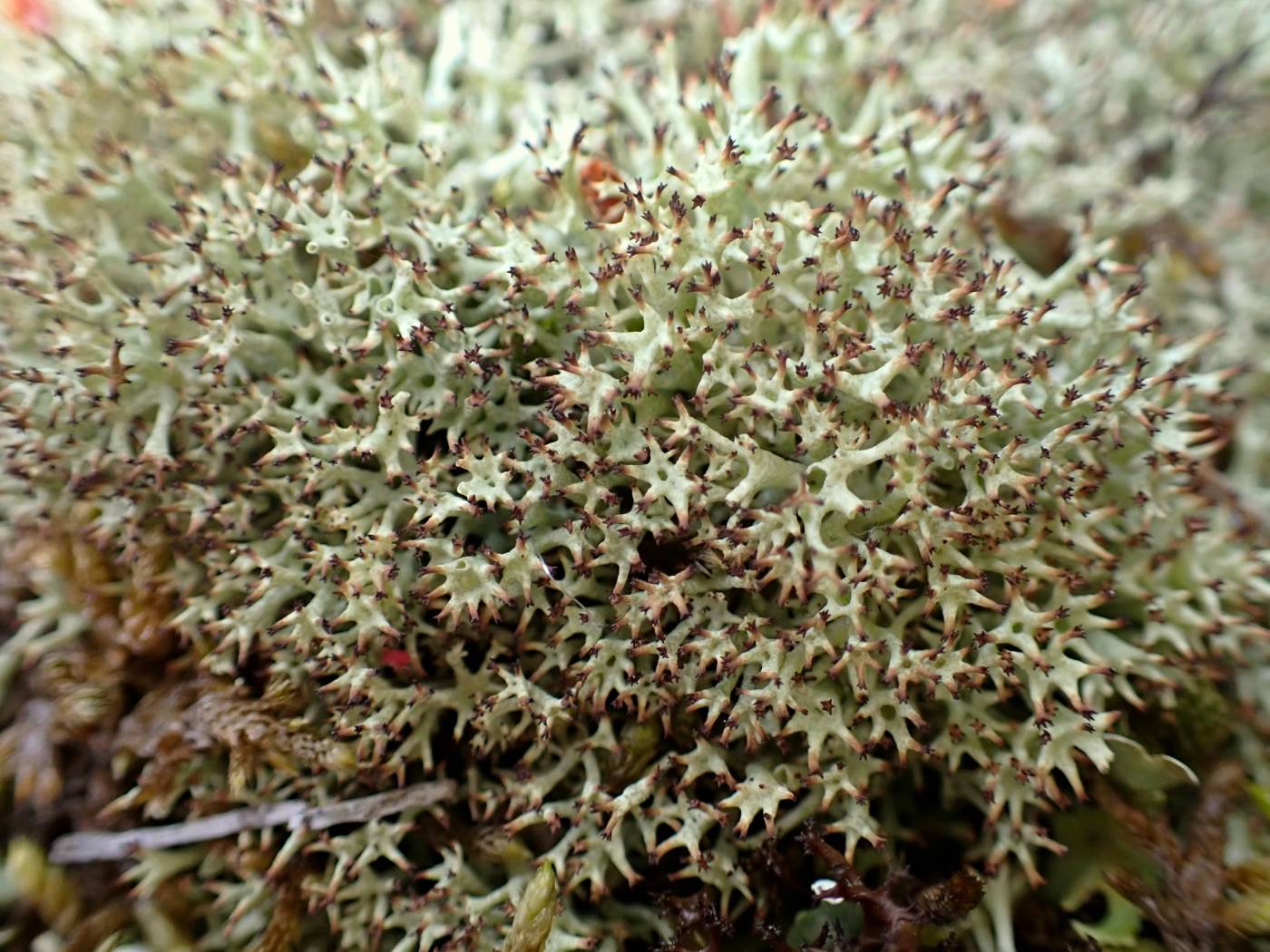A conspicuous Cladonia with mainly tri- to tetrapolytomous branching of the podetia. Other distinguishing features from the similar subsp. biuncialis are the absence of powdery surface in the central cavity of the podetia and only rare presence of squamatic acid. The two subspecies are differentiated based on molecular data, but the differences in DNA are small and distinguishing morphological characters are very variable. Thus, they are kept at the level of subspecies (Stenroos et al. 2015). They were not distinguished in the past, so uncertain records are included in the C. uncialis agg.
The nominate subspecies C. uncialis has continental tendencies in Europe. It occurs on acidic, often sandy soil or humus near rock outcrops, on screes, heathlands and in open pine forests. In the Czech Republic, it is more common than subsp. biuncialis and is scattered from lowlands to mountains. The lichen is rare in Moravia.
Literature: Stenroos S., Pino-Bodas R., Weckman D. & Ahti T. (2015): Phylogeny of Cladonia uncialis (Cladoniaceae, Lecanoromycetes) and its allies. – Lichenologist 47: 215–231.
taxonomic classification:Ascomycota → Lecanoromycetes → Lecanorales → Cladoniaceae → Cladonia
Red List (Liška & Palice 2010):NT – near threatened
Occurrence in the Czech Republic
All records: 70, confirmed 69. One click on a selected square displays particular record(s), including their source(s).




